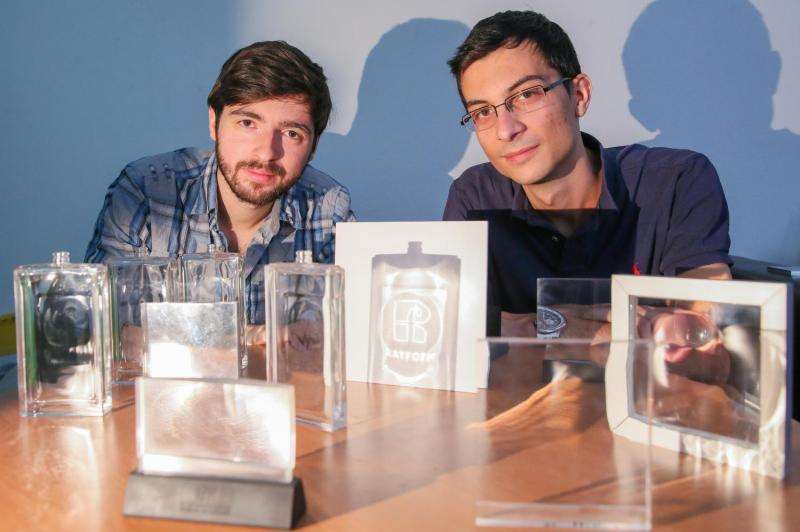Objects that sculpt light

Researchers at EPFL have found a way to make images by controlling the reflections that are produced when light passes through a transparent object. This technology is now being marketed by the startup Rayform. Researchers at EPFL have found a way to make images by controlling the reflections that are produce when light passes through a transparent object. This technology is now being marketed by the startup Rayform.
When light shines on a plain, polished metal medallion, Vermeer's famous painting "Girl with a Pearl Earring" appears on a nearby wall; instead of abstract reflections, a bottle forms the Rayform logo; and lifting up a whiskey glass reveals the brand's name on the tabletop. But none of these objects have been inlayed or imprinted in any way.
It may seem like magic, but there is pure science behind this invention. The technology makes it possible to produce surprisingly clear and complex images on surrounding walls by illuminating transparent or reflective objects. It was developed at EPFL's Computer Graphics and Geometry Laboratory, and a startup has been created as a result.
Called Rayform, the startup offers its services primarily to manufacturers of luxury goods like watches, jewelry, perfume and spirits, as well as for preventing counterfeit products. The technology can be used with a wide range of materials, including metals like gold and aluminum, transparent plastics, glass and certain crystals such as sapphire. "We are currently working with a number of top brands," reveals Romain Testuz, CEO of Rayform. "Several of them are, for instance, interested in making limited editions."
The technology being marketed by Rayform is based on an optical effect known as "caustics." This is the technical term for a phenomenon with which we are all familiar. It occurs, for instance, when sunlight reflects off the surface of water producing ripples of light on the surrounding tiles or walls. These lines, which appear to be moving at random, are caused by the light hitting a puddle or a pool. When a liquid is involved, these reflections appear to move. But with smooth materials – like glass, Plexiglas and polished metals – a static version of the same effect is produced.
Taming light
Researchers at EPFL have now invented a series of algorithms to control these caustic effects, which occur when light interacts with a transparent or reflective surface like water, glass or metal. They have developed software that can accurately calculate the 3-D surface needed to direct the light to specific points in order to create the desired image.
"We calculate the distortions we need to make to the surface based on the image's complexity and the surface type. We then license a 3-D file to our client, which they can use to manufacture the product in question," explains Romain Testuz. Going forward, the startup, which currently has a staff of three, plans to further refine the algorithms and apply the technology to other materials.
Provided by Ecole Polytechnique Federale de Lausanne





















